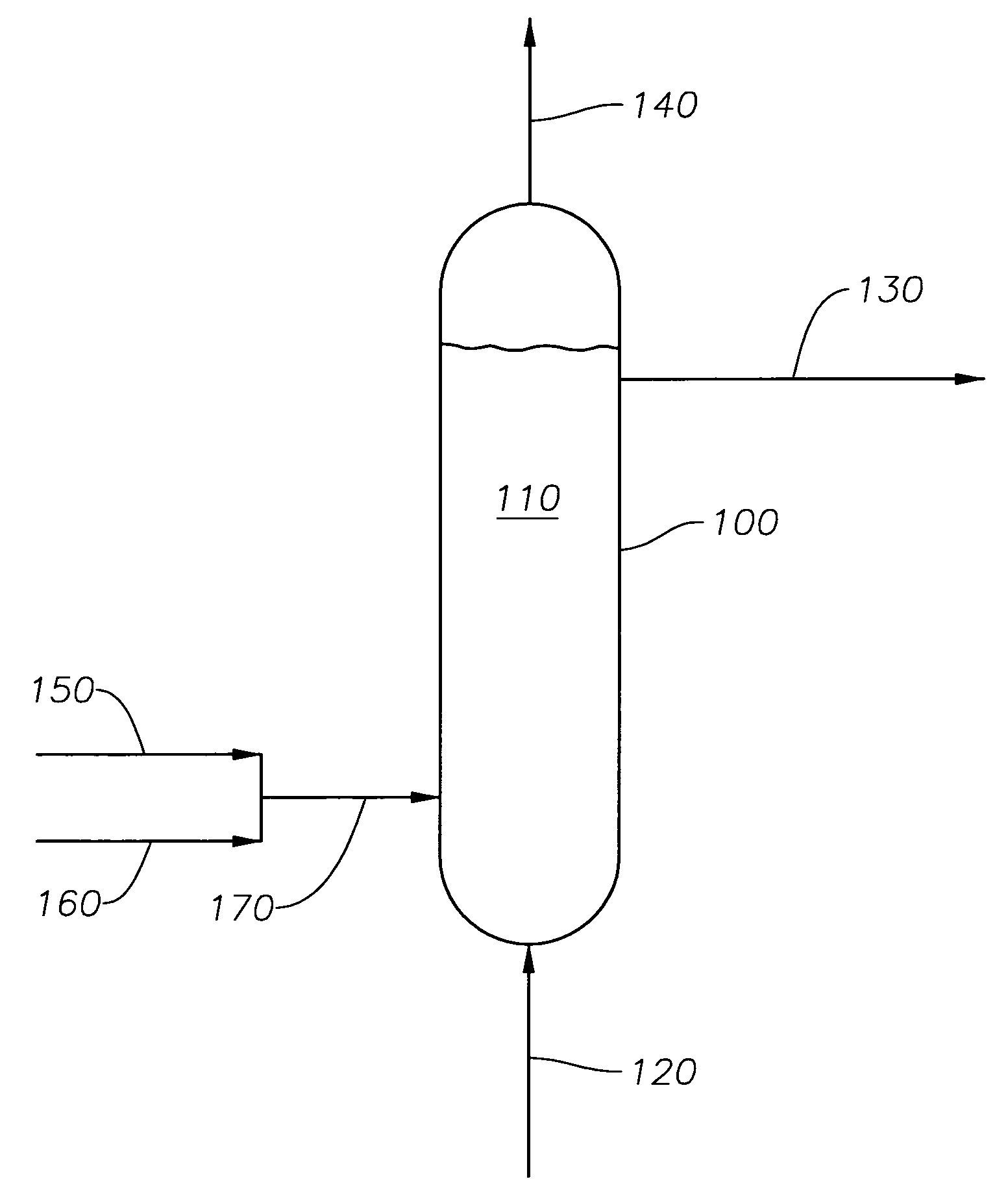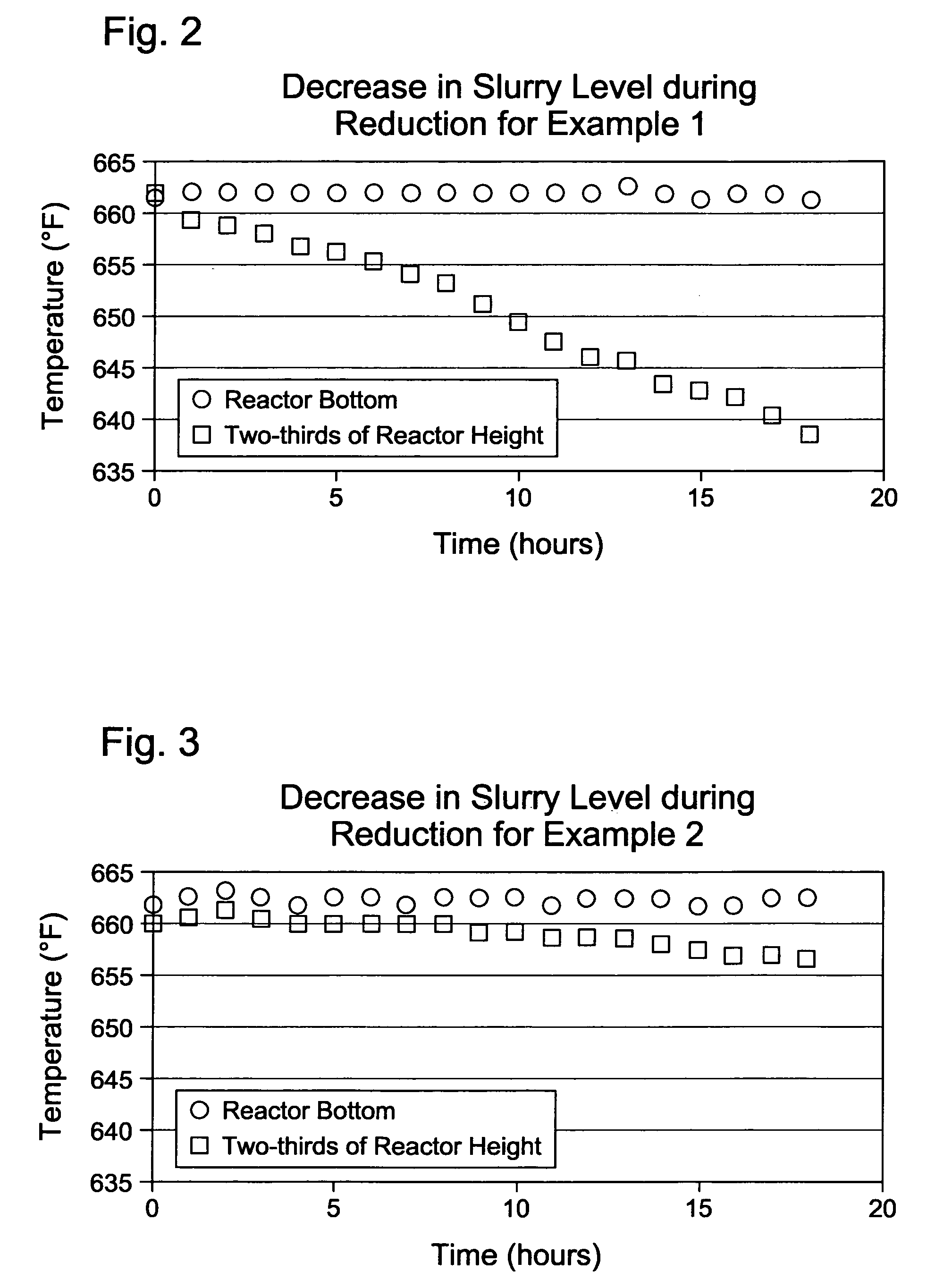Slurry activation of Fischer-Tropsch catalyst with carbon monoxide co-feed
a carbon monoxide co-feed and slurry activation technology, which is applied in the direction of catalyst regeneration/reactivation, physical/chemical process catalysts, metal/metal-oxide/metal-hydroxide catalysts, etc., can solve the problems of inconvenient production, transportation technology challenges, and final cost of natural gas, so as to improve the efficiency and effect of in situ reduction, reduce the loss of slurry and production
- Summary
- Abstract
- Description
- Claims
- Application Information
AI Technical Summary
Benefits of technology
Problems solved by technology
Method used
Image
Examples
example 1
[0052]A 2.2-gram sample of a cobalt-based Fischer-Tropsch catalyst in the oxide form was loaded into the 600-ml stirred tank vessel with about 180 grams of a hydrocarbon oil to form a catalyst slurry in the vessel. The hydrocarbon oil was a neutralized base oil (typically used for lubricants manufacture) consisting of branched and straight chain paraffins with an average of 35 carbon atoms per molecule and an average molecular weight of 492 grams / mol. The base oil used in Example 1 was a base oil under the Registered Trademark of PURE PERFORMANCE® 600N from ConocoPhillips Company (Houston, Tex.). The cobalt-based Fischer-Tropsch catalyst comprised particles with an average particle size of about 70 microns. The catalyst was prepared by an impregnation technique followed by calcination to yield a catalyst composition of about 25 wt % cobalt and small amounts (<1 wt %) of promoters. Hydrogen was used as the reducing gas at a flow rate of 300 standard cubic centimeters per minute (sccm...
example 2
[0056]A 2.2-gram sample of the same cobalt-based Fischer-Tropsch catalyst in the oxide form as used in Example 1 was loaded into the 600-ml stirred tank vessel with 180 grams of hydrocarbon oil (same oil as in Example 1) to form the catalyst slurry. The reducing gas used in this Example 2 was a hydrogen gas containing 500 ppm by volume of carbon monoxide. Similar to Example 1, the reducing gas was used at a flow rate of 300 standard cubic centimeters per minute (sccm), and the pressure in the vessel was maintained at 60 psig.
[0057]The catalyst slurry was heated to the desired reduction temperature of 662° F. (350° C.) using the same heating rate as in Example 1: heating from ambient temperature to 240° F. at 2° F. / min, holding at 240° F. for one hour, and heating from 240° F. to 662° F. at 2° F. / min. The catalyst slurry was maintained at 662° F. for 18 hours.
[0058]The measured gas flow rate at the vessel exit was 300 sccm. The composition of the exit gas was 1.6 mole percent methane...
PUM
| Property | Measurement | Unit |
|---|---|---|
| temperature | aaaaa | aaaaa |
| temperature | aaaaa | aaaaa |
| temperature | aaaaa | aaaaa |
Abstract
Description
Claims
Application Information
 Login to View More
Login to View More - R&D
- Intellectual Property
- Life Sciences
- Materials
- Tech Scout
- Unparalleled Data Quality
- Higher Quality Content
- 60% Fewer Hallucinations
Browse by: Latest US Patents, China's latest patents, Technical Efficacy Thesaurus, Application Domain, Technology Topic, Popular Technical Reports.
© 2025 PatSnap. All rights reserved.Legal|Privacy policy|Modern Slavery Act Transparency Statement|Sitemap|About US| Contact US: help@patsnap.com



